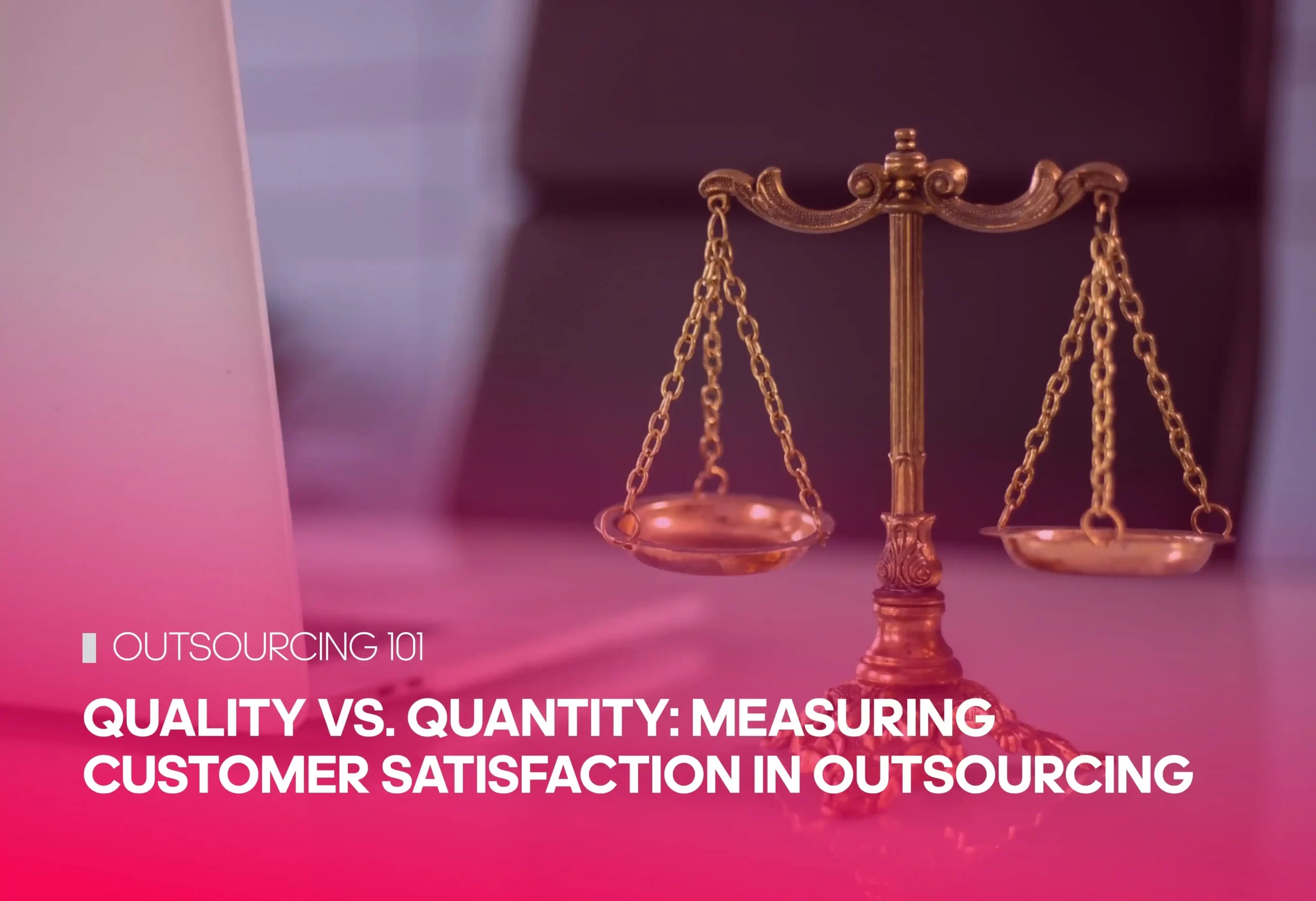One of the most important performance indicators that sets your company apart from the competition is customer satisfaction. The degree to which your client’s demands are met and their expectations are exceeded, as well as whether your services meet or beyond their expectations, is measured by customer satisfaction. Addressing the elements that directly impact your customers’ satisfaction with your brand can help you keep them around in the long term. In addition, this helps you have a better understanding of how consumers view your brand. It also aids in determining the future purchasing choices and brand loyalty of your clients.
When it comes to the argument over quantity vs quality, one of the most widespread fallacies is that the two cannot coexist. Superior quality items or services need more time to get or manufacture, whereas hastily produced goods may fall short of expectations. While there are domains in life and business when quantity and quality are incompatible and necessitate giving up one to obtain the other, there are other instances where achieving both is feasible. The BPO sector, where productivity and efficiency are critical for success, makes the ideal balance between these two concepts all the more important.
In this blog, we will explore the significance and difference between Quality and Quantity of outsourcing.

Performance in Both Quality and Quantity in Outsourcing
In the provision of outsourced solutions, Key Performance Indicators are all crucial. The distinction between these two categories should be noted, too, since qualitative measurements are more customer-focused whilst quantitative indicators are more company-focused.
In a contact center, for instance, time-based quantitative KPIs like average handling time, average waiting time, calls per hour, and completion rate are used to assess an incoming agent team. Additionally, some contact centers concentrate on profit-based metrics, such as sales per call, which gauges success by looking at how much money each agent makes on a given call. Other key performance indicators (KPIs) that are far more representative of the caliber of service given to the client, such as the number of first-call resolutions and customer satisfaction (c-sat) scores, are also used to evaluate the team.
Quality in Outsourcing
Consumers want high-quality service across the whole sales cycle, from pre-buy verification to the actual purchase and post-purchase assistance. Every business has to consider quality, but call centers especially need to consider it. You may assess a client’s degree of satisfaction following their interaction with a customer care agent using a variety of techniques.
Methods for evaluating a call center’s Quality include:
Percentage of first-call resolutions
The quantity of questions that are answered during the initial conversation serves as a gauge for the correctness and quality of the information offered. The primary team will be able to handle the majority of all general and technical inquiries on the first call because of an experienced staff and a most recent resource system.
C-Sat metrics
Following their conversation with a customer representative, customers are asked to submit a survey. On a scale of 1 to 5, they can rate the encounter and their degree of satisfaction. Each agent’s average is shown once all replies have been totaled.
Quality Management Models
For quality and monitoring reasons, audio recordings of calls will be randomly selected and listened to by the manager of call center operations and the general head of quality assurance. A set of criteria, including data collecting, data accuracy, procedural compliance, and conversational tone and competence, will be used to objectively evaluate each call.
Quantity in Outsourcing
Average waiting time
It considers the amount of time a client has to wait before a customer service agent picks up the phone. Forecasting, hiring more people, or providing an overflow call center service all help to enhance this measure. A call center can assess its efficacy and efficiency using AWT, a critical performance indicator that offers insightful data about the effects on consumers, agents, the call center, and the business as a whole.
Call answered percentage
The ratio of calls answered to calls received. 80/20 is the industry standard. In less than 20 seconds, 80% of calls were answered. Naturally, our goal is to respond to calls as quickly as we can. Customers don’t have to wait in lengthy call lines to speak with a live agent when an inbound call center has a high call answer rate, which shows that the agents can manage the number of incoming calls effectively. Conversely, a low call answer rate results in more dropped calls, irate clients, and a negative customer experience.
Average conversation time
This measure needs to be adequately tracked. A brief chat should still yield the appropriate answers for the client, therefore quality metrics like C-Sat and the percentage of first call resolution should be used to analyze it.
In addition, while resolving to handle time difficulties, reviewing typical conversation time is beneficial. Hold time and wrap time are typically to blame when handle times exceed aim. However, contact center managers can find agents that require further system training or assistance with call control by examining only the duration of time that agents spend interacting with clients. It is not easy to tell agents to stop talking to consumers, but it is necessary to guarantee that labor costs are kept under control and that customers are getting an effective experience.
How to measure client satisfaction
To stay current and be updated to your customers, you must be innovative and thoughtful in how you check a client’s degree of satisfaction.
Conducting Surveys
The easiest approach to get feedback from your clients is through a survey. You can use the following survey kinds to target different populations. Customer surveys play a role in collecting information at particular points of contact such as right after a transaction, when a prospective customer decides to abandon a website without making a purchase, or following the resolution and closure of a customer support ticket. By acting upon the insights you gather, you can enhance the customer experience for current as well as potential customers.
Acknowledging Comments on Social Platforms
Keeping an eye on your consumers’ satisfaction is simple with social media. Your company can interact casually with potential customers thanks to its customized touch.
Your client base’s loyalty and general level of pleasure with your service may be inferred from the number of followers, shares, comments, and likes you have across all platforms.
Considering Statistical analysis
Statistics, including website traffic and content views, may assist you in comprehending your consumers’ journey and determining the problems they face most often. Based on your clients’ prior behavior, you may utilize the data you’ve obtained to forecast their behavior going forward.
Monitor the time people spend on your website, the material you publish, and the newsletter bounce rate. Regular publishing on your web pages will increase engagement and provide you with a better understanding of your client’s buying patterns.
How can Splace help?
Are you ready to transform your customer service experience? Look no further than Splace – the ultimate solution to enhance your customer support and leave a lasting impression on your clients!
Splace effortlessly integrates into your existing customer service platform. No complex setups, just a smooth transition to a more efficient and effective customer support system. They streamline communication, making it easier for your team to collaborate and resolve customer queries promptly, tailor your interactions with customers using advanced features from personalized responses to intelligent insights, and create meaningful connections that keep your customers coming back for more.
Experience a significant boost in productivity and provide quicker, more accurate solutions to your customers. Whether you’re a small startup or a large enterprise, Splace is versatile and scalable to meet your evolving customer service needs.
Contact Splace today and see the difference in customer satisfaction and loyalty. Elevate your brand with Splace – where exceptional customer service begins!
About SPLACE
SPLACE is a dynamic and innovative business process outsourcing company that offers a wide range of outsourcing services to businesses worldwide. With a focus on delivering high-quality solutions, virtual assistance, IT solutions, and exceptional customer service, SPLACE has established the company as a trusted outsourcing and call center service provider to companies across various industries.
SPLACE comprises experienced professionals who deliver customized and cost-effective solutions to meet every client’s business needs. The company believes in the power of technology and innovation to drive growth and success, and its main focus is helping clients succeed in an ever-changing business landscape.
Clients looking for support in data management, customer service, virtual assistance, technical support, or any other outsourcing need can seek help from the SPLACE BPO firm.
If you are interested in Splace’s Business Process Outsourcing Solutions,
Email: ceo@splacebpo.com or call us at
US: +1 929 377 1049 CA: +1 778 653 5218 UK: +61 483 925 479 AU: +61 483 925 479 NZ: +64 9 801 1818
NL: +31 20 532 2142







